Champions of Change Blog
No Talking About Us Without Us: Why Youth Need a Choice and a Voice
Posted by on July 12, 2012 at 11:11 AM EDT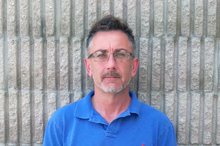
Tim Baack is being honored as a Champion of Change for his work to combat homelessness among children and youth.
There’s a saying amongst those of us who work with runaway and homeless youth that I’ve heard often during our annual national conference: No talking about us without us. I like this phrase – I mean I really like it – because I think in a simple yet deeply profound way it captures the essence of youth leadership and genuine youth-led services. Youth have the biggest stake in everything we try to do, every new program or service or strategy or initiative we pilot or expand or maintain or end, because at the end of the day it’s their lives we’re talking about.
And yes, as administrators and counselors and social workers and educators we talk an awful lot about youth. What we think they need. Or don’t need. What they want. Or don’t want. How we can provide the most effective and efficient services, and where to find the resources (staff, money, community support, political will) needed to create and sustain the programs we believe youth so desperately need. And to be quite frank, if we’re good at what we do – and again I mean really good at it – then we’re pretty on target most of the time. But if you think about it, most of the time isn’t good enough when we’re talking about the survival of our youth.
Learn more about ,Helping Solve the Puzzle of Youth Homelessness
Posted by on July 12, 2012 at 11:07 AM EDT Beth McCullough is being honored as a Champion of Change for her work to combat homelessness among children and youth.
Beth McCullough is being honored as a Champion of Change for her work to combat homelessness among children and youth.
The woman who hired me 11 years ago said "I don't know if we have any homeless students here, but the Federal Government said we have to hire someone to go find them." The previous year they identified one homeless student in the school district. I spoke to the local shelter and they reported having over 90 students in their shelter that year, most of whom weren't attending school. They didn't know which school to go to or if they were allowed to go to school while in the shelter. The McKinney-Vento Homeless Education Assistance Act immediately changed lives in that shelter.
I started finding students in homeless situations outside of the shelter system. I found them in sheds, under porches, in abandoned buildings and "couch surfing." I found the students but I also found a lack of services. The power of their stories reached our community and agencies and individuals came together to find answers.
Food pantries agreed to stay open after school hours. Goodwill Industries, which usually works with individuals with disabilities, started an employment program for homeless unaccompanied youth. Collaborative efforts formed a program much like a foreign exchange student program, except a family takes in a homeless student. It is called "Roadmap to Graduation" and to date 100% of students in that program have graduated. Our Head Start program added a Head Start Family Worker to our largest shelter and doubled the number of homeless students in Head Start.
Learn more about ,Providing Safe Shelter for Homeless LGBT Youth
Posted by on July 12, 2012 at 10:57 AM EDT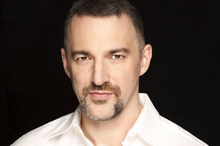
Carl Siciliano is being honored as a Champion of Change for his work to combat homelessness among children and youth.
When the Ali Forney Center first opened its doors ten years ago, there was simply no safe shelter for homeless LGBT kids in New York City. With nowhere safe to turn, many kids slept in parks and in the subways. Many turned to survival sex – trading sex for shelter. These young people struggled to survive in dangerous, squalid, humiliating situations.
Ali Forney was a gay youth who was rejected by his family and forced to live on the streets of New York City at the age of 13. I was the director of a drop in center for homeless youth and met Ali when he was 17. In December of 1997, Ali was murdered on the streets. He was 22 years old.
My central inspiration for doing the work we do has been enduring the tragic deaths of Ali and six other homeless LGBT youths during a time when NYC had no safe shelter for LGBT youth; I never want to see that happen again. When the Ali Forney Center opened its doors in June of 2002, I had no idea if we would survive. We had just one donor and a church offering us free use of their basement, where we provided six cots. Since we opened our doors there have been no murders of homeless LGBT youth on the streets of NYC. Ali’s murder was never brought to justice, but his spirit lives on in our work and in each of the lives we transform.
Learn more about ,Shining a Light Through the Tunnel of Homelessness
Posted by on July 12, 2012 at 10:45 AM EDT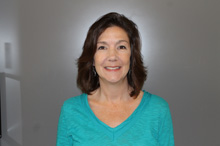
Margaret Schuelke is being honored as a Champion of Change for her work to combat homelessness among children and youth.
DeKalb County, Georgia school social workers report that the number of students identified as homeless has increased by approximately forty percent over the past three years, surpassing over 2,000 students last year. This figure alone creates a compelling case for why taking new and creative steps to address family homelessness is absolutely necessary.
However, a statistic from the State Report Card on Homelessness creates an even greater sense of urgency. According to the report, less than 25% of homeless students in this country graduate from high school. This highlights the long-lasting, negative effects of homelessness on educational achievement, and in turn, on long-term prospects for financial stability.
At Project Community Connections, Inc. (PCCI), we believe there is a light at the beginning, middle, and end of the tunnel through homelessness, and we want to help shine that light. By partnering with other mission-minded people and organizations, PCCI helps families prevent, endure, and overcome homelessness. These organizations offer an array of vitally important, high quality services, but alone they are not enough to meet the many needs of most families experiencing homeless. That is why partners, who are equally committed to bringing hope, housing and wholeness, are critical to our mission.
Learn more about ,Adopting a Rapid Re-Housing Approach to Address Family Homelessness
Posted by on July 12, 2012 at 10:31 AM EDT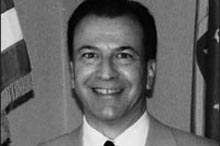
Frank Cirillo is being honored as a Champion of Change for his work to combat homelessness among children and youth.
I have been fortunate to have had nearly a 40-year career in public service at the Mercer County Board of Social Services. For 33 of those years, I have administered a variety of social service programs including Temporary Assistance to Needy Families (TANF), Medicaid, NJ SNAP, General Assistance, Adult Protective Services, Work First New Jersey (WFNJ), and Child Support. I have served as the agency Director for the past eight years. During that time the Mercer County Board of Social Services (MCBOSS) has been in the forefront of transforming our community’s response to family homelessness. With the strong support of government and community based partners, we have begun to significantly and innovatively change our approach to combatting family homelessness by instituting a systematic approach that establishes a single point of entry, comprehensive evaluation, integrated case management services, front-end emergency assistance strategies and a rapid rehousing model.
Learn more about ,The Promise of 'This Land Is Your Land'
Posted by on July 12, 2012 at 10:17 AM EDT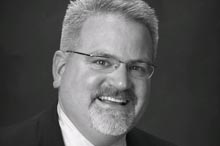 Paul Hamann is being honored as a Champion of Change for his work to combat homelessness among children and youth.
Paul Hamann is being honored as a Champion of Change for his work to combat homelessness among children and youth.
I am incredibly honored and moved to have been named a White House Champion of Change. I believe, though, that this honor really needs to go to the staff and volunteers of The Night Ministry whom I just so happen to have the privilege and thrill of leading on a daily basis, as the organization’s President and CEO. The staff and volunteers are the ones who are the true champions, either directly working with clients to help them change their lives or working behind the scenes to support the mission of The Night Ministry. It is my passion and privilege to lead, develop, and to sustain the organizational context in which their work takes place. When I reflect upon my work, I really think I am one of the luckiest people in the world.
The song “This Land is Your Land” contains the following lyrics: “This land is your land. This land is my land . . . This land was made for you and me.” When I hear these words, I cannot help but think that, for some of our communities’ members, they are hollow words. Homeless youth often don’t experience or feel the promise of these lyrics. These youth who are on the streets, who are couch surfing from one friend’s home to another, who are squatting in vacant buildings, or who are exchanging sexual favors for a “safe” place to spend the night are often ignored or cast aside. Much of society doesn’t even recognize them. To realize the dream that claiming a part of the land is supposed to carry with it seems impossible for them.
Learn more about ,
- &lsaquo previous
- …
- 105
- 106
- 107
- 108
- 109
- 110
- 111
- 112
- 113
- …
- next &rsaquo
White House Blogs
- The White House Blog
- Middle Class Task Force
- Council of Economic Advisers
- Council on Environmental Quality
- Council on Women and Girls
- Office of Intergovernmental Affairs
- Office of Management and Budget
- Office of Public Engagement
- Office of Science & Tech Policy
- Office of Urban Affairs
- Open Government
- Faith and Neighborhood Partnerships
- Social Innovation and Civic Participation
- US Trade Representative
- Office National Drug Control Policy
categories
- AIDS Policy
- Alaska
- Blueprint for an America Built to Last
- Budget
- Civil Rights
- Defense
- Disabilities
- Economy
- Education
- Energy and Environment
- Equal Pay
- Ethics
- Faith Based
- Fiscal Responsibility
- Foreign Policy
- Grab Bag
- Health Care
- Homeland Security
- Immigration
- Innovation Fellows
- Inside the White House
- Middle Class Security
- Open Government
- Poverty
- Rural
- Seniors and Social Security
- Service
- Social Innovation
- State of the Union
- Taxes
- Technology
- Urban Policy
- Veterans
- Violence Prevention
- White House Internships
- Women
- Working Families
- Additional Issues

